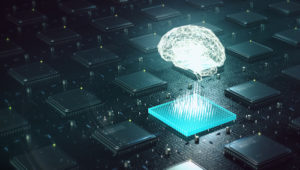In light of the fact that only 59 percent of students who begin pursuing a four-year degree at a higher-ed institution graduate within six years, many in the industry are seeking innovative ways to improve student outcomes.
Recent advancements in artificial intelligence (AI) have led to its adoption across many sectors. The multidisciplinary field presents a wide variety of opportunities for application, giving it great potential for use in higher education. AI encompasses these sub fields:
- machine learning, used in everything from search engines to recommendation systems
- natural-language processing, a prominent use case being the language understanding of Amazon’s Alexa
- computer vision, which is used for tasks such as facial recognition.
We are only beginning to scratch the surface of the many ways this technology could be used to help universities improve the student experience.
AI uses on campus
One way AI could revolutionize the higher ed experience is through automating the course-scheduling process. Rather than the current, sometimes lengthy, process of searching for courses that fit specific schedule and major requirements and deliberating over which ones to take, students could simply input any particular scheduling conflicts, such as a job or extracurricular activity, and receive a suggested course schedule tailored to their academic needs that fits within their time constraints.
Machine learning models could assess a student’s academic record, including previous courses taken and chosen major, to select courses that set the student on a path to graduation. Beyond simply meeting major requirements, however, the models could analyze the student’s past performance and suggest courses in which the student is most likely to succeed. This system could be used effectively from the student’s personal computer, as well as in the advising office. Using AI to automate scheduling could help students to stay on track toward graduation and take courses that will challenge them while also enabling them to succeed.
Another potential use for AI on campus is streamlining the admissions process by making accurate forecasts and predictions. For example, colleges and universities need to be able to accurately estimate how many accepted students will enroll in each upcoming term. If institutions are not able to make accurate predictions, both over- and under-enrollment can cause serious problems. Over-enrollment requires the institution to accommodate more students than it has resources for, resulting in a reduction in quality for the students who choose to attend. Under-enrollment threatens the long-term stability of the university through the loss of potential gains. Robust machine learning models, informed by historical institutional data and external data such as economic trends, could be used to make accurate predictions about the number of students who will choose to enroll at a given institution, thus mitigating the threat of over- and under-enrollment.
Making AI innovations a reality
What can universities be doing today to prepare for these coming innovations? Because these types of machine-learning tasks require massive amounts of data, universities should begin to aggregate and properly maintain their data, if they are not already doing so. Modern access to data is largely what has allowed machine learning to progress so fast in recent years. Many of the machine-learning algorithms and methods in use today were first theorized decades ago, but without access to enough data, they were of limited use. One way that colleges and universities can begin to aggregate their data is through the adoption of a data lake architecture, which differs from other stores of data because it can accommodate data in any form, aggregating data in varying formats from many different sources. A data lake acts as a central repository of information, separate from each institution’s system of record, and allows machine learning engineers and data scientists easy access to all aggregated data without impacting production systems.
Machine-learning tasks frequently require data beyond that which is available on an individual institutional level and, because of this, data lake architectures are becoming increasingly important and popular. Using a data lake allows these machine-learning models to easily pull data from institutions as well as from national and international sources such as the National Center for Education Statistics and the United States Bureau of Labor Statistics. These massive stores of data allow us to create very robust machine-learning models capable of making far more accurate predictions to benefit higher ed. Institutions can most easily begin to integrate with a data lake architecture by leveraging those run and maintained by external providers. Enterprise-level solutions reduce the institutional maintenance overhead and can allow universities to quickly and efficiently begin harnessing the power of data across campus. A properly maintained data lake can serve as an invaluable resource for data scientists, analysts, and the institutions they serve. Universities that begin now to aggregate their data are likely to see great benefits in the future.
As the capabilities of our technology are increasing exponentially, it is both fascinating and rewarding to find ways to put our technological capacity to use improving the offerings of higher education institutions. Ultimately, the goal of all these incremental improvements is to make a difference in the lives of students, empowering them to earn their degrees and achieve their long-term goals.
- Survey: More students want to go to graduate school - April 24, 2024
- Educause, AWS launch generative AI readiness assessment tool for higher ed - April 23, 2024
- A bungled FAFSA rollout threatens students’ college ambitions - April 19, 2024

